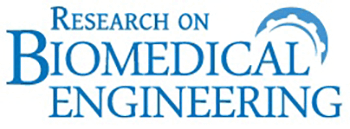Introduction
Raman spectroscopy may become a tool for the analysis of glucose and triglycerides in human serum in real time. This study aimed to detect spectral differences in lipid and glucose components of human serum, thus evaluating the feasibility of Raman spectroscopy for diagnostic purposes.
Methods
A total of 44 samples of blood serum were collected from volunteers and submitted for clinical blood biochemical analysis. The concentrations of glucose, cholesterol, triglycerides, and low-density and high-density lipoproteins (LDL and HDL) were obtained using standard biochemical assays. Serum samples were placed in Eppendorf tubes (200 µL), kept cooled (5 °C) and analyzed with near-infrared Raman spectroscopy (830 nm, 250 mW, 50 s accumulation). The mean spectra of serum with normal or altered concentrations of each parameter were compared to determine which Raman bands were related to the differences between these two groups.
Results
Differences in peak intensities of altered sera compared to normal ones depended on the parameter under analysis: for glucose, peaks were related to glucose; for lipid compounds the main changes occurred in the peaks related to cholesterol, lipids (mainly triolein) and proteins. Principal Components Analysis discriminated altered glucose, cholesterol and triglycerides from the normal serum based on the differences in the concentration of these compounds.
Conclusion
Differences in the peak intensities of selected Raman bands could be seen in normal and altered blood serum samples, and may be employed as a means of diagnosis in clinical analysis.
Raman spectroscopy; Human serum; Glucose; Lipids; Cholesterol; Triglycerides

 Thumbnail
Thumbnail
 Thumbnail
Thumbnail
 Thumbnail
Thumbnail
 Thumbnail
Thumbnail
 Thumbnail
Thumbnail
 Thumbnail
Thumbnail
 Thumbnail
Thumbnail
 Thumbnail
Thumbnail







